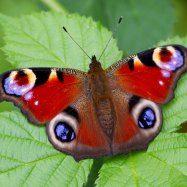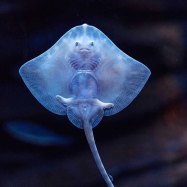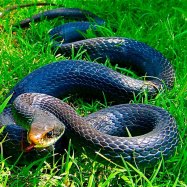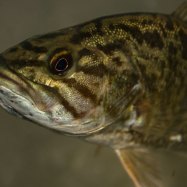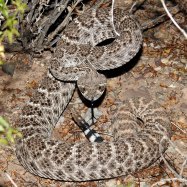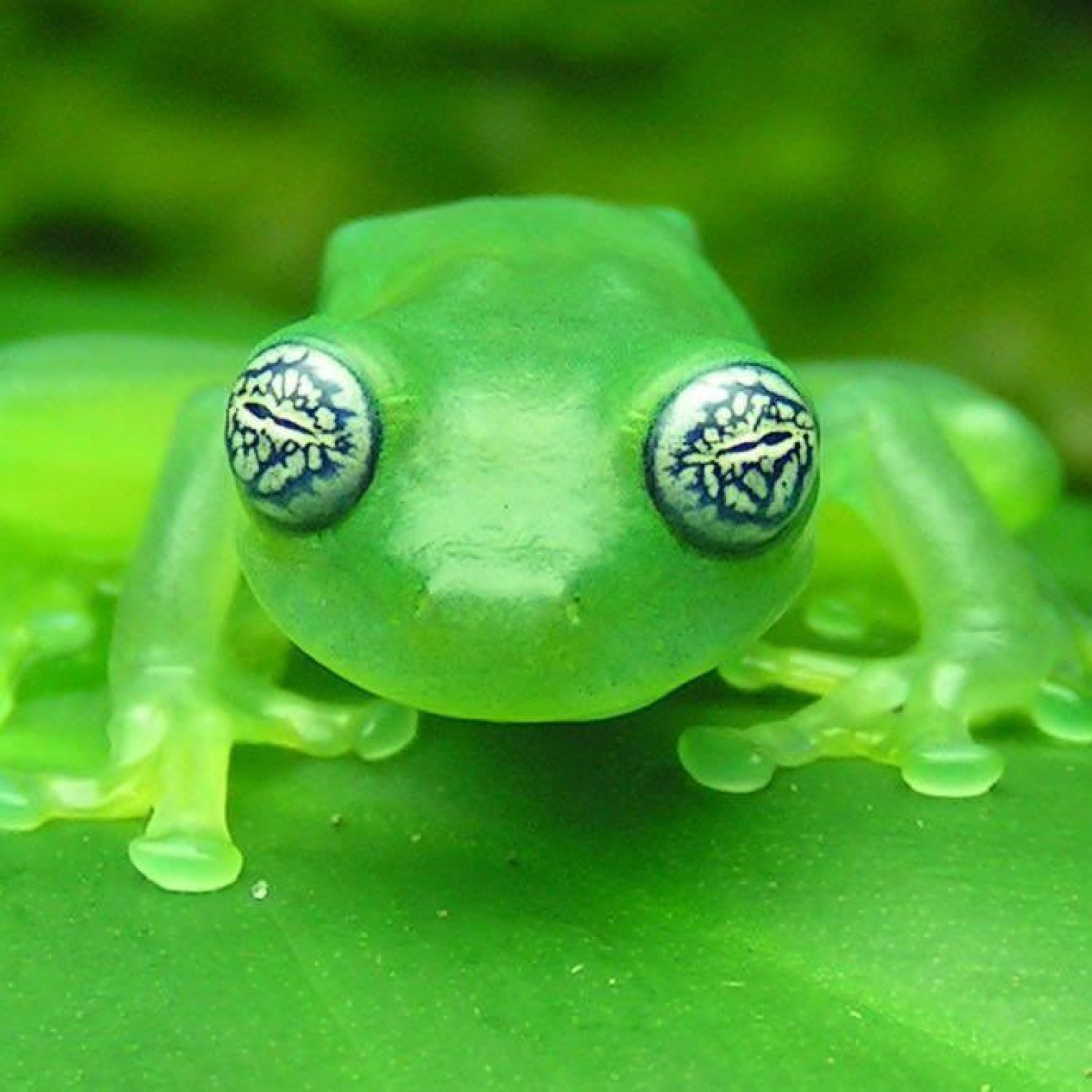
Glass Frog
2.5 to 7.5 centimeters
Glass frogs, known for their transparent skin, are one of the most intriguing creatures found in the rainforests of Central and South America. Ranging from 2.5 to 7.5 cm long and belonging to the Centrolenidae family, these small and slim amphibians are often hard to spot due to their camouflage abilities. Keep your eyes peeled on your next trek through the lowland and montane rainforests for a chance to spot these fascinating creatures in their natural habitat.
Animal Details Summary:
Common Name: Glass Frog
Kingdom: Animalia
Habitat: Tropical rainforests
The Amazing Glass Frog: A Marvel of Nature
Just imagine walking through the dense, lush green forests of Central and South America and suddenly spotting a tiny, bright green creature with transparent skin sitting on a leaf. This is not a figment of your imagination, but rather the beautiful and unique glass frog, also known as Centrolene buckleyi.These tiny creatures might be small in size, only ranging from 2.5 to 7 Glass Frog.5 centimeters in length, but they are a marvel of nature with their transparent skin and vibrant green coloration. In this article, we will take a closer look at the fascinating glass frog, its distinctive characteristics, and its importance in the ecosystem.
Classification and Distribution
The glass frog belongs to the Animalia kingdom, Phylum Chordata, and Class Amphibia. It is a member of the family Centrolenidae and belongs to the Anura order, which includes all species of frogs and toads.Glass frogs can be found in the tropical rainforests of Central and South America, making their home in countries such as Costa Rica, Panama, Colombia, Ecuador, Peru, Brazil, and Bolivia. They are usually found in lowland and montane rainforests, but can also be spotted in areas near streams and rivers.
Distinctive Features
As their name suggests, the most striking feature of glass frogs is their transparent skin. This unique characteristic allows us to see their internal organs, making them one of the few animals in the world with this remarkable trait. However, not all glass frogs have completely transparent skin; some have small patches of opaque skin on their backs Great Plains Rat Snake.Apart from their transparent skin, glass frogs also have bright green coloration, earning them the nickname "emerald-eyed frogs." This green coloration acts as camouflage against their green surroundings, making them difficult to spot. Their slender body shape also aids in their camouflage, as they can easily blend in with the leaves and branches of their habitat.
Habitat and Feeding
Glass frogs make their home in the tropical rainforests of Central and South America, where they can find an abundance of food and suitable breeding grounds. These frogs are primarily carnivorous, feeding on a diet of insects such as beetles, flies, ants, and termites. They are also known to feed on smaller frogs, spiders, and even small fish.They have a specialized tongue that can shoot out to catch their prey quickly. This unique ability makes them efficient hunters, and they usually feed at night when their prey is most active.
Reproduction and Life Cycle
One of the most fascinating aspects of glass frogs is their unique reproductive behavior. Male glass frogs are known for their dedicated parental behavior, which is rare in the animal kingdom. When it is time to mate, the male glass frog will find a suitable leaf above a body of water and call out to potential mates. The females will then lay their eggs on the underside of the leaf, and the male will guard and protect them until they hatch.Once the eggs hatch, tiny tadpoles fall into the water below, where they have to fend for themselves. The male glass frog continues to stay near the eggs and tadpoles, keeping a watchful eye until they develop into tiny frogs.
Threats and Conservation
Like many other species in the rainforest, glass frogs are facing threats to their survival as their natural habitats continue to diminish due to deforestation and human activities. They are also at risk from pollution and climate change, which can affect the delicate balance of their ecosystem.Conservation efforts are being made to protect the remaining habitat of glass frogs and other rainforest species. National parks and reserves in Central and South America have become crucial in preserving the biodiversity of these regions, and it is important to continue these efforts to ensure the survival of glass frogs and other species.
In Conclusion
The glass frog is a truly astounding creature, with its transparent skin and vibrant green coloration. They play an important role in the ecosystem as both predator and prey, and their unique reproductive behavior adds to their fascinating character.While they may not be found in other parts of the world, the glass frog is an integral part of the rich biodiversity of the rainforests in Central and South America. As we continue to learn more about these incredible creatures, it becomes even more critical to protect their habitats and ensure their survival for generations to come.

Glass Frog
Animal Details Glass Frog - Scientific Name: Centrolene buckleyi
- Category: Animals G
- Scientific Name: Centrolene buckleyi
- Common Name: Glass Frog
- Kingdom: Animalia
- Phylum: Chordata
- Class: Amphibia
- Order: Anura
- Family: Centrolenidae
- Habitat: Tropical rainforests
- Feeding Method: Carnivorous
- Geographical Distribution: Central and South America
- Country of Origin: Costa Rica, Panama, Colombia, Ecuador, Peru, Brazil, Bolivia
- Location: Found in lowland and montane rainforests
- Animal Coloration: Bright green
- Body Shape: Small and slim
- Length: 2.5 to 7.5 centimeters
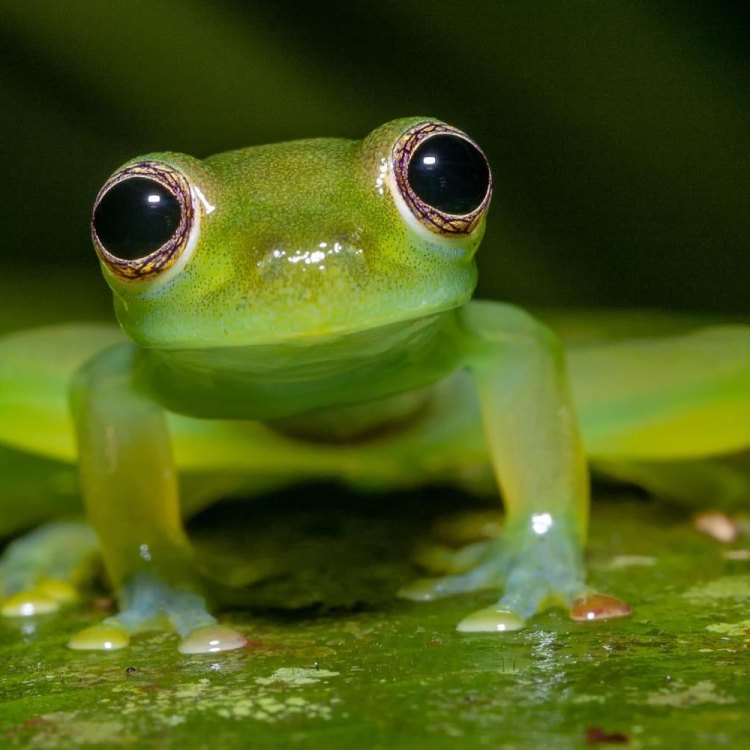
Glass Frog
- Adult Size: 2.5 to 7.5 centimeters
- Average Lifespan: 4 to 14 years
- Reproduction: Sexual
- Reproductive Behavior: Eggs are laid on leaves and hatch into tadpoles
- Sound or Call: Males produce a unique and melodious call to attract mates
- Migration Pattern: None
- Social Groups: Solitary
- Behavior: Nocturnal
- Threats: Habitat loss, pollution, climate change
- Conservation Status: Varies by species
- Impact on Ecosystem: Indicator species for environmental health
- Human Use: None
- Distinctive Features: Transparent skin on the ventral side of the body
- Interesting Facts: Glass frogs are named for their translucent skin that allows you to see their organs
- Predator: Snakes, birds, small mammals
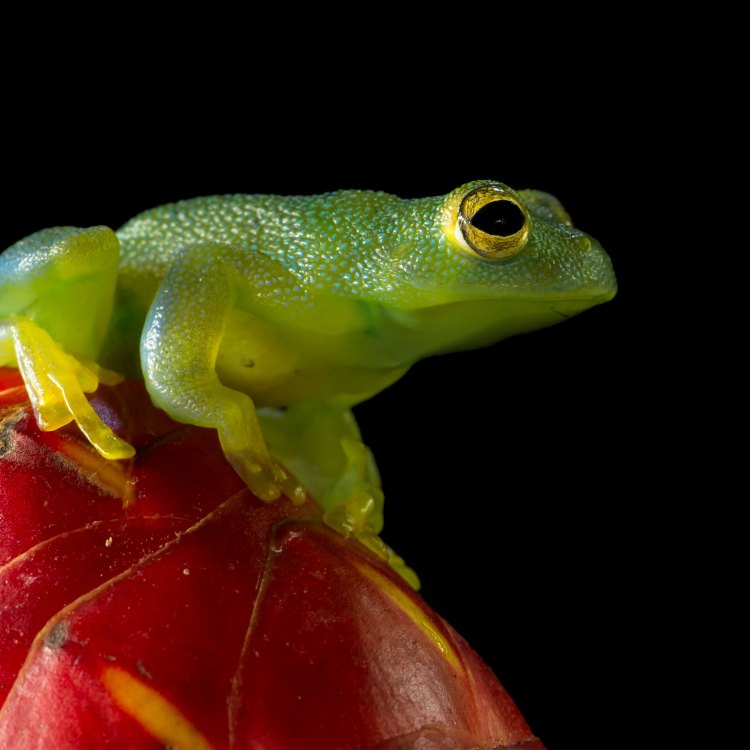
Centrolene buckleyi
The Amazing Glass Frog: A Unique Species With A Transparent Secret
When you think of frogs, you may picture a small, green amphibian hopping around in the water or on lily pads. However, there is one type of frog that breaks away from this traditional image – the glass frog. With its distinct transparent skin, the glass frog is a truly unique and fascinating creature that captivates the attention of all who encounter it. In this article, we will dive into the world of glass frogs and explore their many interesting features and behaviors PeaceOfAnimals.Com.Glass frogs, also known as "see-through" frogs, are a type of tree frog found in the rainforests of Central and South America. They belong to the family Centrolenidae, which is comprised of over 150 species of glass frogs. These amphibians can range in size from 2.5 to 7.5 centimeters, making them relatively small creatures compared to other frogs. However, what they lack in size, they make up for in their unique physical appearance.
One of the most distinctive features of glass frogs is their transparent skin. Unlike most frogs whose skin is opaque, glass frogs have transparent skin on the ventral side of their bodies, allowing you to see their internal organs. This unique trait is how they got their name Giant House Spider. Due to this transparency, you can literally see right through them, making them a truly marvel of nature.
Apart from their transparent skin, glass frogs also have other physical characteristics that set them apart from other species. They usually have bright green or yellow-green skin, making them well-camouflaged in the lush green vegetation of the rainforest. They also have large, bulging eyes, long fingers, and toes with adhesive pads that help them grip onto leaves and branches.
Another interesting fact about glass frogs is that they have a varied lifespan, ranging from 4 to 14 years in the wild. This lifespan can vary depending on the species and their living conditions. In captivity, glass frogs have been known to live up to 15 years.
Like most frogs, glass frogs are sexually reproductive and go through a process called amplexus during mating. This behavior involves the male grasping the female, typically around the waist, while she lays her eggs. However, what sets the glass frog apart is their unique reproductive behavior. Instead of laying their eggs in a body of water like most frogs, glass frogs lay their eggs on leaves overhanging a stream or river. This creates a safe and ideal location for their offspring to hatch into tadpoles and eventually drop into the water when they are ready.
Speaking of reproduction, glass frogs have an interesting way of attracting mates. The males produce a unique and melodious call to attract females. They do so by inflating their vocal sacs and producing high-pitched, bird-like calls. Each species of glass frog has its own distinctive call, and some have even been described as being musical or "trilling."
When it comes to their behavior, glass frogs are primarily nocturnal, meaning they are most active at night. They spend their days hidden among the vegetation, coming out at night to hunt for insects and small invertebrates. They are also solitary animals, meaning they do not live in social groups like many other frog species.
Despite their unique features and behaviors, glass frogs face various threats in their natural habitats. One of the biggest threats is habitat loss due to deforestation and agricultural activities. The destruction of their rainforest homes not only reduces their habitat but also affects their food supply and breeding grounds. Other threats include pollution and climate change, which can have a significant impact on the delicate ecosystems where glass frogs reside.
Due to these threats, many species of glass frogs are facing declining populations, and some are even at risk of extinction. As a result, the conservation status of different species varies. Some are listed as Least Concern, while others are listed as Endangered or Critically Endangered, making it crucial to protect and preserve these unique creatures.
Aside from their ecological importance, glass frogs also play a crucial role in indicating the health of their environment. Due to their sensitivity to changes in their surroundings, they are considered an indicator species for environmental health. If their populations start to decline, it is a warning sign that something is wrong in their habitat, which can have a ripple effect on other species living in the same ecosystem. As humans continue to encroach on their habitats, the conservation of glass frogs becomes even more critical.
While glass frogs may not have any apparent human use, they play a significant role in our ecosystem and deserve our protection and conservation efforts. By preserving their habitats and reducing our impact on the environment, we can ensure the survival of this unique and mesmerizing species.
In conclusion, the glass frog is a truly captivating species that stands out for its transparent skin and fascinating behaviors. From their unique reproduction and mating habits to their nocturnal and solitary lifestyle, these creatures are a true marvel of nature. However, with their habitats and populations facing threats, it is essential to raise awareness about their conservation and to appreciate their beauty and significance in our ecosystem. Let us do our part in protecting the glass frog and its home so that it can continue to thrive for generations to come.
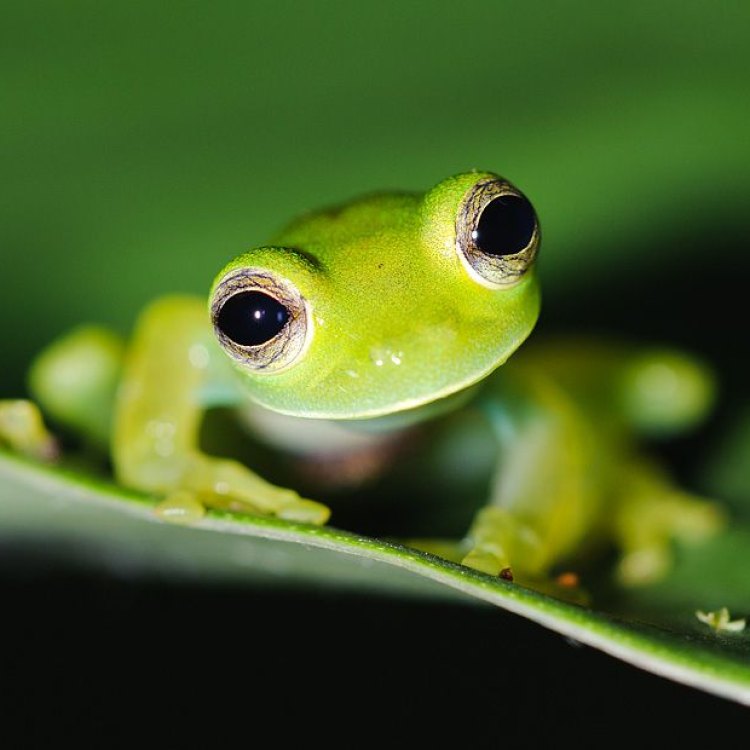
The Amazing Glass Frog: A Marvel of Nature
Disclaimer: The content provided is for informational purposes only. We cannot guarantee the accuracy of the information on this page 100%. All information provided here may change without prior notice.




